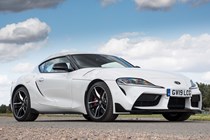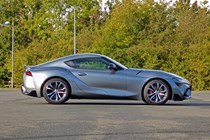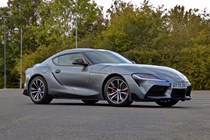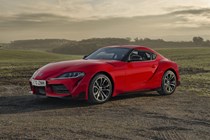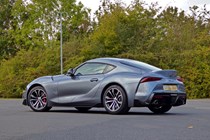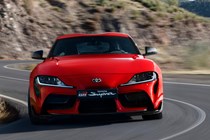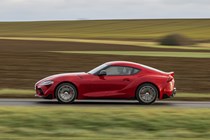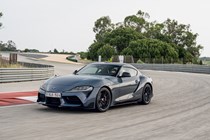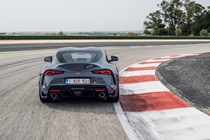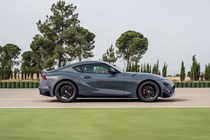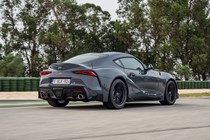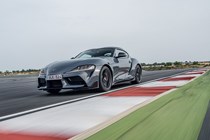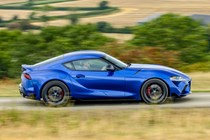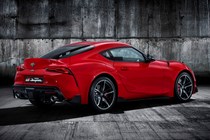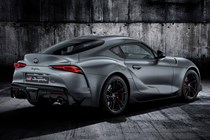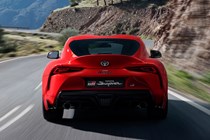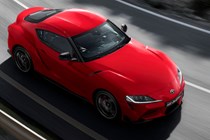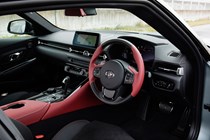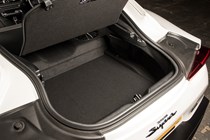
Toyota GR Supra Coupe (2019-2023) engines, drive and performance
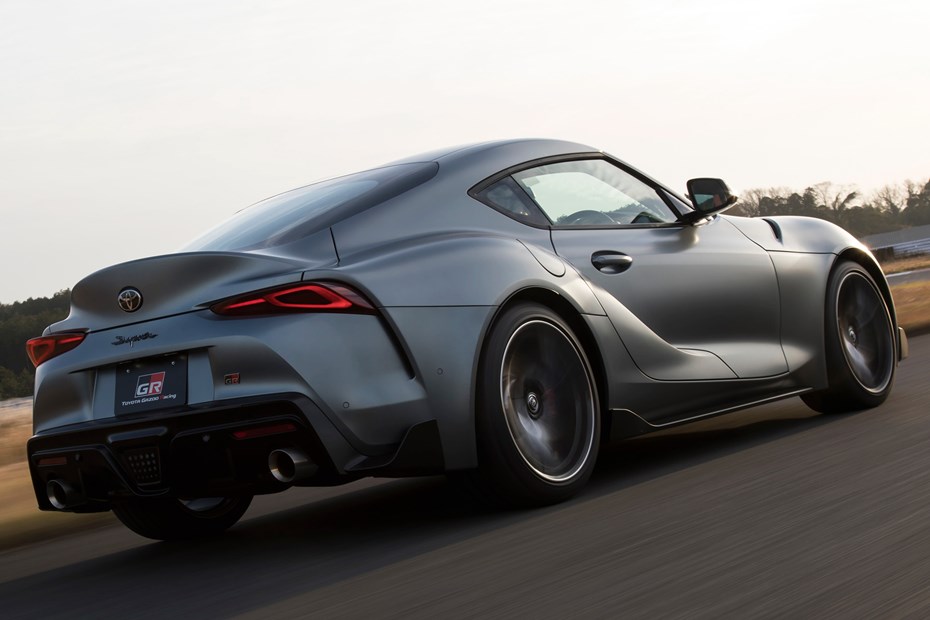
- Two turbocharged petrol engines available
- Deep-chested soundtrack gives real sports car feel
- Near-supercar performance is highly entertaining
Petrol engines
The entry-level 2.0-litre produces 258hp and 400Nm of torque, good enough for 0-62mph of 5.2 seconds and a top speed of 155mph. That’s plenty to get on with, especially when the engine eagerly picks up speed from low speeds. It’s best sampled in Sport mode when the automatic gearbox sharpens up its responses and while there’s plenty of artificial exhaust sounds piped into the cabin, the twin pipes themselves are relatively muted, so this could be ideal for those wanting to avoid attracting too much attention.
We suggest opting for the larger engine, though. Toyota has made tweaks to the 3.0-litre straight-six turbocharged engine, but it is still unmistakably a BMW unit. Purists of the Supra heritage may bemoan the lack of a purpose-built powertrain, but for those simply interested in a capable performer, it does the job convincingly, and largely sounds and feels just right for the buyers it’s aimed at.
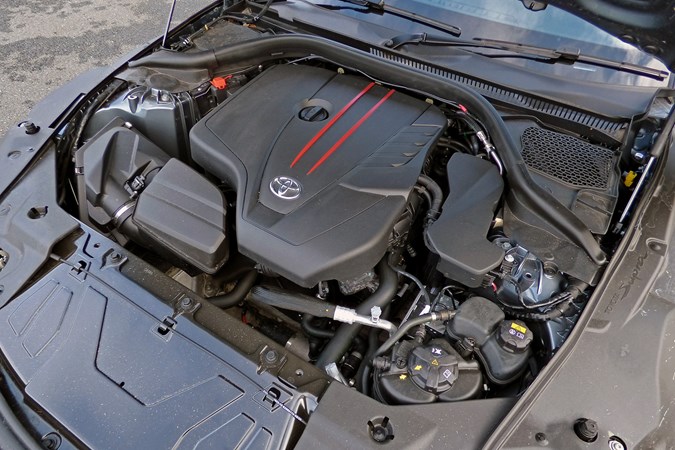
Producing 340hp and 500Nm of torque, it hauls the 1,495kg GR Supra from 0-62mph in 4.3 seconds and tops out at electronically limited 155mph. There’s plenty of low-down pulling power with maximum torque available from just 1,600rpm, but this leaves little incentive to venture far beyond 5,500rpm. This six-cylinder engine sounds a little neutered, lacking the audio thrills of a comparable Porsche 718 Cayman GTS.
What’s it like to drive?
- Hard-edged suspension and incisive handling
- Somewhere between a sports car and a GT
- Balanced handling, if a little detached
Toyota has combined a short wheelbase (the measurement between the front and rear wheels) and two-seat layout to achieve a perfect 50:50 weight distribution. No wonder the GR Supra is – even by the exceptionally high standards set by the 718 Cayman and Alpine A110 – a nicely-balanced sports car. Out on the road, this translates into a predictable, approachable handling manner that drivers of all abilities can exploit.
Revisions made to the GR Supra range in 2022 brought detailed changes to the suspension, a modest reduction in weight and fettled programming to the traction control to sharpen responses. We’ve driven the car on road and track and can confirm it meets its fun-to-drive mission with aplomb.
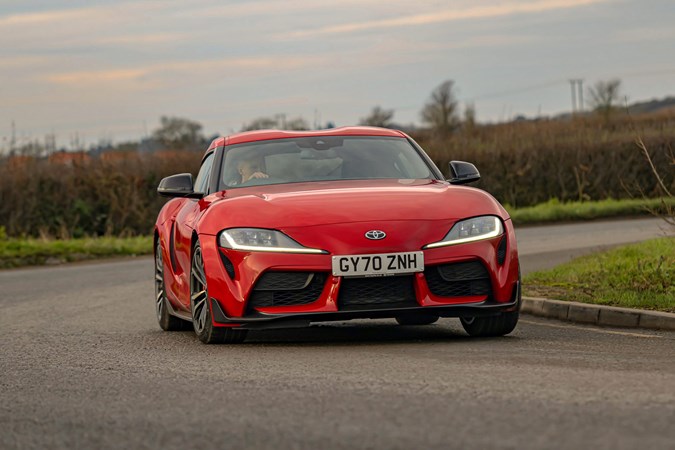
The steering is typically heavy, especially in Sport mode, but fails to come to life with feel, remaining quite muted in its feedback. We’ve no problem with how direct or quick it feels, though. The stiffness of the suspension set-up and well-judged damping mean that what the steering lacks in overall communication, the chassis makes up for. The GR Supra flows down the road.
There’s an awful lot of clever tech at play in the Supra: an active differential shuffles power between the two rear wheels depending on the driving conditions, providing great poise and even a few skids if you’re at a track day.
On the road the Supra proves impressively competent, in part due to the comparatively modest 19-inch wheels that allow comfortable bump absorption; it’s entirely reasonable to use the Supra as a long-distance tourer, despite the hard-edged ambition and uncompromising rivals Toyota has in its sights.

The eight-speed automatic transmission on the 2.0 and 3.0 models is smooth and the shifts well timed, yet in manual mode it’s not quite as crisp or quick-to-respond as Porsche’s PDK equivalent you’ll find in a 718 Cayman.
The six-speed manual gearbox, available exclusively on the 3.0 six-cylinder Supra and denoted by a red Supra badge on the bootlid allows DIY gearchanges. It’s well judged for a car of this type; we particularly enjoyed the rev-matching system, which blips the throttle on downchanges to match the road and engine speed for a perfect downshift every time. Toyota predicts as many as 46 percent of European buyers will pick the manual transmission option on the GR Supra 3.0.




